OVERVIEW
Module “Management of multifunctional farming activities” gives student information to comprehends the importance of managing the multifunctional farm: planning and organizing different activities with available sources (working force, finance, land, time...), implementation of multifunctional activities such as tourism, traditional food, rural habits… and monitoring of processes and outcomes. Students will learn to predict the managing risk, and how to develop an alternative plan. The module also gives information to recognize the role and work of a woman/ a man farmer as the manager, her/his responsibility, and the ethic needed for being a good manager.
LEARNING OBJECTIVES
Knowledge:
You will be able to identify the management functions and processes on a multifunctional farm and recognise the role and work of the manager.
Skills:
You will develop skills to assess the existing settings of the multifunctional farm and build the planning and monitoring of different natural, human, material and financial resources; predict risk, manage the conflict resolution processes, and implement a backup plan.
Competences:
One of the case studies of the project REWARD Orellana Perdiz (ES) is a multi-functional farm owned and managed by three sisters in the north of the province of Jaén, on a property where the ruins of the castle that gave its name to the Battle of Navas de Tolosa are located, between some old silver and lead mines. The brand is Orellana Perdiz and from there all the activities are generated. They have managed to make each of the activities work independently. Pilar attends food, livestock or any other kind of fairs, selling her products but at the same time is making the Orellana Perdiz brand known and simultaneously promoting the rest of the activities.
She mentioned that problem arises when they have to organize themselves to manage all the activities because they may have a small structure and do not know if they should increase it.

- 1.1. What is meant by managing all the activities?
- 1.2. Basic functions of management
- 1.3. Managing the multifunctional farm means the very broad scope of decision making - especially those related to markets and marketing
- 1.4. Manager ethics
Managing is a process of decision-making regarding the use of the resources available: setting objectives, how to plan, implement and monitor the multifunctional farm as a business. The goal of all these functions is to make profits and added value to the multifunctional farm. The main importance of the process is an analysis of farmers’ resources (natural resources, infrastructure, information – communication technology, workforces, services, finance, and technologies…)
Good managing decisions could create financial surpluses and bad decisions cause financial losses.
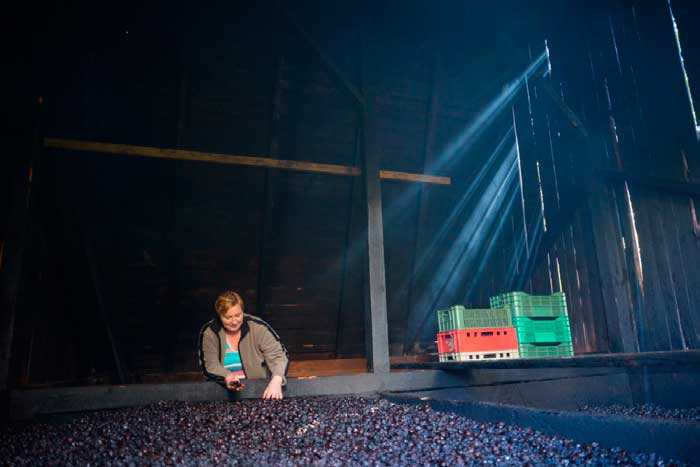
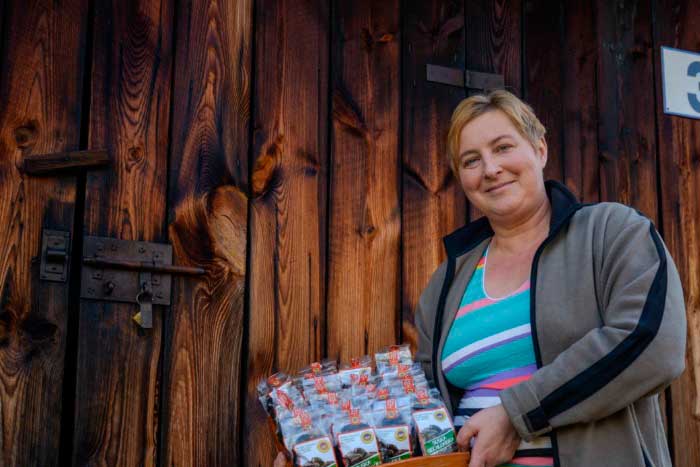
Photos: Wiśniowy Gaj“ (“Cherry Orchard”), Irena Szewczyk, Polish case study.
- Diagnoses: monitoring the art of the state of the sources of multifunctional farm and past performance (weakness/strengths)
- Planning: on the monitoring and evaluation results manager plans the future multifunctional activities and production considering the opportunities and threats.
- Implementation: economical implementation with the least cost, without environmental pollution and added values.
- Monitoring (evaluating, controling): for avoiding the problems that appeared and for planning new business opportunities.

Figure 1: The farm management cycle. (Ref. 9)
The management cycle shows functions and activities which are needed to achieve goals and objectives on the multifunctional farm.
The activities are divided into:
Primary activities: organizing, farming operations, and marketing.
Supported activities: managing farm infrastructure, managing workforces, choosing technology, buying inputs.
- Organizing: sourcing, purchasing, and storing inputs and materials used in production and services, collecting, storing, and distributing products and services to buyers.
- Farming operations: production and services activities transforming inputs into final outputs and adding value.
- Marketing: monitoring of the market, market channel selection, negotiating with buyers and pricing, promotion…
- Managing farm infrastructure: it has to be properly maintained and managed.
- Managing labor: who, when, and what should do a certain task or work to be used properly.
- Choosing technology: constant modernization of technology for production, services, communication…required for a farm manager to be capable to identify problems, find solutions, make a decision for investment, test and evaluate results.
- Buying inputs: identifying reliable input suppliers, choosing between regional or international suppliers, choosing the inputs regarding the price or quality...
Case study: “Wiśniowy Gaj“ (“Cherry Orchard”)
Is a farm located in the Beskid Wyspowy Mountains area in Malopolska Province. A woman, who inherited the farm from her mother and together with family members, developed its activities towards the production of regional produce, tourist, and didactic activities, manages the farm. After taking over the farm, the owner began to limit crops and animal production, which had previously dominated the farm for the development of traditional orchard cultivation and other activities connected to rural heritage. Currently, almost the whole area of farmland is planted with fruit trees: plum, cherry, and apple, and the main activities are focused on the production and sale of the regional plum “Suska sechlońska PGI” and other dried fruits.
In a previous case study woman management who heritage the farm decided on a reoriented traditional farm to multifunctional farm consequently different management questions appear.
What to produce and what services offer to use the capacity of a rural environment and cultural heritage?
What combination of resources should they use in doing so?
Where, how, and to whom to sell the regional plum, tourist, and pedagogical services?
How to compete in local or export markets?
How to finance and how much to invest in diversifying outcomes?
How to organize the multifunctional farm in a way that increases profitability?
How to link up to markets such as through a producer cooperative or association?
A good manager is:
- Ethical and honest at all times.
- Telling the truth and don’t hide or manipulate information.
- Admit failure and not trying to cover it up.
- Share ethical values to employees through symbols, stories, slogans, and good examples.
- Rewarding employees who behave ethically.
- Protecting employees who bring to light unethical behaviors or raise ethical issues. (Ref. 4)
Ethics try to answer the question such as what is good and bad behavior, how to do something with moral duty and obligation. It presents the rules and principles that define right and wrong conduct. Management ethics is a treatment of employees, stakeholders, owners, and the public by a company.
1.4.1. Some examples in ethics of managing the multifunctional farm

Photo: Jams and juices, Tatjana Štancar, Slovenian case study
- The organic farm produce juices and marmalades form their ingredients and sell them like the organic brand. In the bad season, they could produce fewer juices or they could buy ingredients from the other organic producer or they could buy ingredients from conventional farming where the price is the lowest? What is ethical?
- A month ago, the client booked all the rooms available on-farm tourism for the weekend. Another client wants to book all rooms on the same date and extend the stay for a whole week. Shall we offer another term to the first and the second client or shall we cancel the reservation of the first client. What is ethical?
Managing the multifunctional farm with ethics, values and principles give sustainability to the farm business.
Trustworthiness and respect are needed for fair play, better transparency, and building the trust between different stakeholders: input suppliers, buyers, consumers... This brings greater commitment among labor and staff, better information sharing, and improved reputation. All this behavior and attitudes bring benefits to the business.
Managers should set up the standards within the framework of core values. Applying these values will help the business to distinguish itself from others and will build confidence among clients. A good manager is looking for the long term business and she/he is not attracted by the short-term benefits and action to make a quick gain.
- 2.1. Manager skills
- 2.2. Manager knowledge and information
- 2.3. Manager attitudes
- 2.4. Manager tasks
- 2.5. Leading and motivating
- 2.6. Goal setting
- 2.7. Focused on problem-solving
Managers in a multifunctional farm try to achieve profits from production and different services, protect environment and landscape, and have a positive active role in society. For all this, she/he has to develop their management skills on different issues.
- Marketing as one of the most important skills to make a profit.
- Risk management because multifunctional farming involves great risk (weather, workforce, services depend on the season...)
- Financial management is important for the right financial flow, to be ongoing with costs and income.
- Labor management is important to answer some questions: how many workers, should I hire someone, are workers enough motivated to do their tasks...
To ensure profitability and competitiveness an integrated approach in all these activities is needed.
Farm manager has to know what’s going on in their business. She/he has to have an overview of goals and plans (long and short-term), enterprise knowledge and competences, well knowing the market and managing financial, human, infrastructural, natural... resources.
The good manager is constantly looking for new information and knowledge.
It includes technical knowledge (production technology, ongoing with smart and information -communication technology), marketing techniques, engineering knowledge, relevant legislation, sources of financing, and basic background of management principles and theories (planning, organizing, and monitoring).
A good manager is open to “hard” information, such as facts and figures, and “soft” information such as competences, attitudes, and feelings of other people.
"Improvements in farmers’ managerial knowledge must go hand-in-hand with improvements in technical skills. Better knowledge of farm management should help farmers to obtain the type of information they need to make better decisions and to better manage the choices that they have." (Ref. 2)
The manager has to have a sense of the happening in particular situations and can tune the problematic situation to problems solving action.
The manager with sensitivity for people can respond in an appropriate way to different conflict situations. This is important in managing a family farm or farm with employees.
The most important work of a manager is making decisions. The manager must, therefore, developed judgment-making skills. Sometimes decisions are made by using logic, many times by experiences and intuition, and an ability to weigh the pros and cons of the situation.
Managing the multifunctional farm requires interpersonal skills and a range of abilities in activities such as: communicating, delegating, negotiating, resolving conflict, persuading, selling, using and responding to authority and power.
She/he has to deal with a range of different people: family members, contractors, shearing teams, agents, neighbors, employees, authorities...
Management decisions on multifunctional farm contain a large scope of tasks:
- Selecting the most profitable combination of products and services (Should I renovate the old barn and made a nice store? Should I produced traditional or more profitable new cultivars?...)
- Determining the most profitable size of production and services (Should I renovate the old building as a family tradition or should I build a new bigger one for expending business with agriculture tourism?...)
- Using credit wisely ( which bank gives the most favorable credit?...)
- Deciding in most profitable methods and practices (Should I buy a milking robot?...)
- Make marketing decision (Should I sell my products on farm-sell or by social network ..)
- and a lot of other strategic or actual decision.
2.4.1. Farmers make decisions through the following means
- Tradition
Some farmers base their decisions on tradition. They may rely on traditional methods of management and follow established patterns of farming. These methods have evolved over a long time. For example, a farmer might decide on a cropping pattern based on a crop rotation that is widely used. - Comparison
Some farmers base their decisions on comparison with other farmers. For example, a farmer may apply fertilizer at rates used by others cultivating the same crops. - Economics
Other farmers may base their decisions on economic considerations – looking for ways to make profits. They may look at the prices of products and their costs of production and marketing, and then calculate costs and profit. Often these decisions are taken by farmers without complete information. Farmers may not know the prices and costs of products and inputs. In that case, profit may be calculated without including all the cost items and without making a proper assessment of the value of production. This may mean that farmers will not maximize profits. - Farming for profit requires economic data and information. (Ref. 2)
The successful entrepreneurial farmer is a good leader. This involves motivating, enabling, and drawing out the talent of people to achieve the goals of the farm business. Motivation is done through good communication; a building of trust and confidence, creating a climate that encourages good performance and developing the capabilities, skills, and competencies of staff.
- Knowledge: Understand how to motivate people
- Skills: Communication, Assessing performance
- Attitudes: Trustworthy, Encouraging, Builds trust“ Source: ENTREPRENEURSHIP in farming: An overview by David Kahan
The motivation for running a multifunctional farm are:
- Personal: to continue farming, to enhance personal/family quality of life, work in nature, the farm is a suitable environment for raising children, the farm is a quality living environment
- Economics: profit, to increase or diversify the market, to respond to a market need or opportunity….
2.5.1. Example of motivation
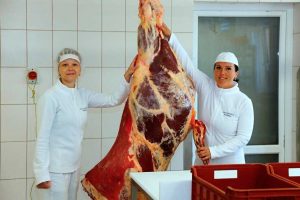 Why Lucie Bošinova from Ekofarma Bošina decided for multifunctional activities on the farm, which were her motives?
Why Lucie Bošinova from Ekofarma Bošina decided for multifunctional activities on the farm, which were her motives?
"Multifunctional activities brought to the farm the possibility of higher product prices, access to a wider market, establishing contacts and cooperation with other farmers, winning various awards such as Regional Food of the Hradec Králové Region 2017, Award for Outstanding Contribution of the Region, Harvest Festival of the Hradec Králové Region, title Private Farm of the Hradec Králové Region, Award for Contribution to the Development of EVVO in the Hradec Králové Region in 2016, BROUMOVSKO Regional Product, etc.."
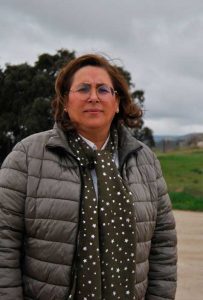 Self-motivation and motivation of other workers on a multifunctional farm is an important role of manager as we can see in the case study case study Orellana Perdiz.
Self-motivation and motivation of other workers on a multifunctional farm is an important role of manager as we can see in the case study case study Orellana Perdiz.
"According to Pilar the companies are lively and it is very easy to get a good heritage but it is also very easy to lose it. The person who manages it has a lot of influence: the will of the person, the sacrifice. You have to have faith and believe in what you are doing because it is a long process of several years and that is going to take a lot of your time and money. On the Orellana Perdiz always listen to their workers’ opinions and that helps them. They believe that the staff must be motivated, involved; they make the staff see that they are not anonymous people, that they are important for the company."
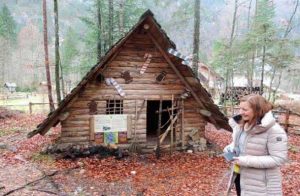 Managers in multifunctional farms must be patient and focused on long-term goals. A good manager has to stop sometimes and reflect on the frame’s activities, outcomes, staff, market, where the business is going the best and where the worst. In such a way farmers maintain perspective and make the best decision in short and long-term goals, she/he has to be strategic in her/his planning and implementation. Good managers try to strengthen the competitiveness of the multifunctional activities through satisfying buyers and staying focused on realizing the long-term goals.
Managers in multifunctional farms must be patient and focused on long-term goals. A good manager has to stop sometimes and reflect on the frame’s activities, outcomes, staff, market, where the business is going the best and where the worst. In such a way farmers maintain perspective and make the best decision in short and long-term goals, she/he has to be strategic in her/his planning and implementation. Good managers try to strengthen the competitiveness of the multifunctional activities through satisfying buyers and staying focused on realizing the long-term goals.
In Case study Andreja Bizjak explains that she is fully committed to the goal of sustainable tourism, so she strives to develop an energy-efficient hotel, using local food, to cooperate with the local community and to produce as little waste as possible. Eko hotel “Na razpotju” had an energy renovation with EU funds, including the renovation of a roof destroyed by a severe storm. The rehabilitation is directed towards a passive facility which will also help to get Marjetica environmental certification.
Farmers have to be good decision-makers and problem-solvers to be effective managers. But as entrepreneurs, they must be focused and conscientious. Entrepreneurs have a strong desire to solve problems and to seize opportunities. They actively look for solutions.
Knowledge:
- Understand the decision-making process
- Understand the problems the farm business faces
- Understand the opportunities that arise
Skills:
- Identify problems and opportunities
- Locate, gather and organize data relevant to the problems
- Generate, evaluate and choose alternatives
- Implement and monitor the chosen alternative
Attitude:
- Actively look for effective ways of solving problems. (Ref. 3)
2.7.1. Example of problem-solving
 In the Case study Ekofarma Bošina we could see how they solve the problem with promoting organic production?
In the Case study Ekofarma Bošina we could see how they solve the problem with promoting organic production?
The main reason for organizing, for example, Farmers’ feasts or excursions on the farm is to enlighten and familiarize them with organic farming and production of organic food. “Raising” public and children as potential prospective farmers or customers (livestock farming, organic food production, tasting quality food, buying farm products, etc.), getting to know, and be more close to the end customers. But organizing, for example, Farmers’ Celebrations has also a social impact.
The management is a cycle process were on the results of monitoring and evaluation of multifunctional activities, production, and sources available the manager has to give the diagnose of the condition of the business, sets goals and start to plan, and implement the activities.
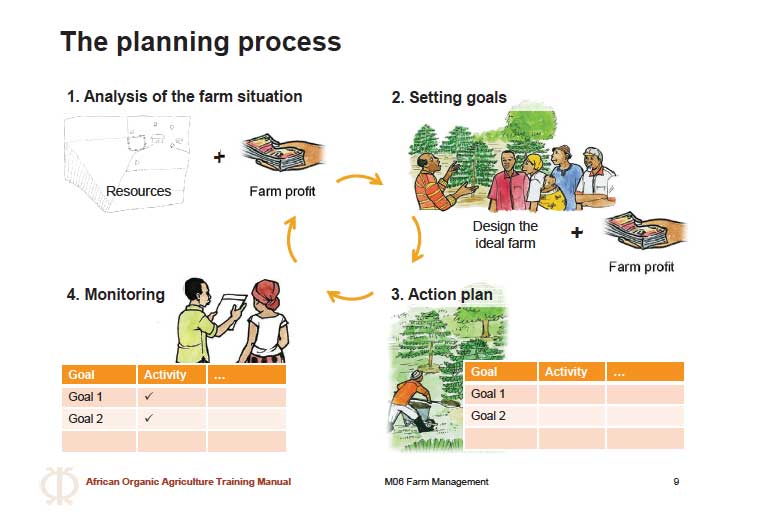
Figure 2: The planing process (Ref. 7)
To make a position of the multifunctional farm in the future the strategic management is necessary. The manager has to be open-minded about what helps her/him to make good choices among alternative possibilities. The question appears all the time: how my decisions contribute to the goals I was set up? The strategic manager is proactive, focused on positive outcomes, creative...
Strategic implementation concern the organization of multifunctional activities with farm production, workers available, time, season...For good organization some standard procedures and structures have to be done with clear tasks of workers, using the best resolution for transport, store and using information communication technology.
The multifunctional farm can increase its profits and create value through different strategies, such as:
- Diversify; means the number of new products or services being sold. Successful diversification strategies show us that all capacity of resources on the farm was not utilized. The tangible and intangible rural heritage could mean the diversification of the farm incomes when starting the tourist, pedagogical, environmental, or social activities. Strategic implementation concern the organization of multifunctional activities with farm production, workers available, time, season...For good organization some standard procedures and structures have to be done with clear tasks of workers, using the best resolution for transport, store and using information communication technology.
- Lower costs; it is the most commonly used strategy in farming. It involves finding less expensive resources and inputs and using more efficient production systems. It can also involve increasing volume to reduce the per-unit cost.
- Expand the size of the business; includes increasing sales, physical and financial assets of the farm.
Expanding the size of the farm can take different forms:
- The capacity expansion means more land under crops or more head of livestock or more multifunctional activities. It is designed to take advantage of economies of scale (i.e. spreading costs over more production).
- Replication; existing successful farm operations are replicated (duplicated) in a different location. The strategy is used when there is no possibility of expanding the enterprise at the current location
- Modernizations; the assets of the business are not expanded but are modernized so that production is more efficient.
- Add value to the multifunctional farm; is to increase income by adding value to existing or diversified products and services. Adding value to a product depends on buyer needs. Farmers have to identify what different buyers look for like value. Nowadays the production of organic, domestic food without pollution of the environment is a value. Traditionally making traditional food is also an added value. Rural culture heritage is a proper way to added values in production and services on the farm.
- Specialize; is the opposite of diversity of production and activities. The aim is to meet market demands and raise a profit. Specializing in one product or one activity is riskier when the demand of market change.
- Differentiate the product; farmers make their product different and better than those of their competitors. To achieve this, the production and marketing processes are different from those of competitors so that the product matches what buyers prefer.
Differentiation is created by:
- The nature of the product;
- The information farmers have about their buyers;
- The way the product is presented;
- The way it is distributed.
- Integrate; vertical integration is where the farm controls or is involved in one or more more ‘links’ in the value chain. The farm may integrate ‘forward’ into processing products, or ‘backwards’ into supplying inputs. Horizontal integration is where the farm joins with other farms to produce the same product. (Ref.3)
3.1.1. Example of planning
About needing of planning in case study The farm “Zaczarowane Wzgórze” (“Enchanted Hill”)
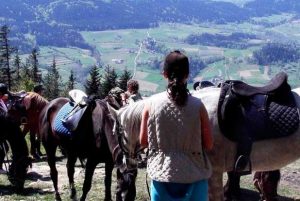 “Multifunctionality means the possibility of employing / engaging people with different interests, skills, different professions, and the opportunity to earn income at different times of the year - if the season for horse riding is bad then maybe it is a better season for events. It also has marketing significance - because it gives recognition to various markets and this affects the increase in the number of recipients.”
“Multifunctionality means the possibility of employing / engaging people with different interests, skills, different professions, and the opportunity to earn income at different times of the year - if the season for horse riding is bad then maybe it is a better season for events. It also has marketing significance - because it gives recognition to various markets and this affects the increase in the number of recipients.”
"Enchanted Hill" is a place that works on many levels. It is both a horse farm, with an emphasis on horse riding lessons, natural horse riding, training and courses as well as a residence tourism facility for children, where summer and winter camps and green schools are organized or a destination for day trips connected with education. Teaching is based on the author’s own experiences, tested, and adapted to needs over the years.
The didactic programs vary depending on the seasons, group size, and age of the children. Each group is treated individually and the programs are flexible. Such a wide range of activities guarantees that the center is active throughout the year, regardless of the season and weather.
Planning is an important function of managing multifunctional activities and should be practice regularly. Different interrelated activities and sources have to be prepared and implemented in the time frame. The result of the planning process is the ‘farm plan’, which acts as a guide for carrying out the required activities to achieve desired results and effect desired change.
The planning process includes the following steps:
- Analysis of the current situation.
- Setting up goals.
- Identification of specific activities and innovations.
- Schedule of implementation.
- Plan the persons in-charge and the labor requirement.
- Data and information
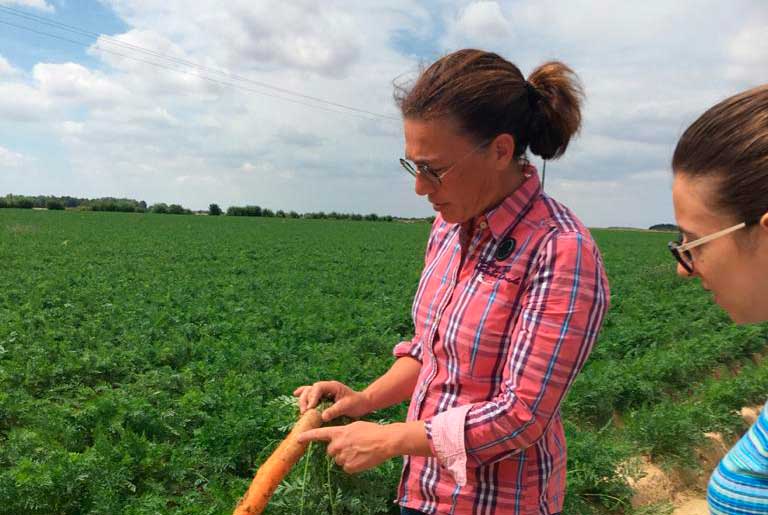

Photos: French case study –Charlotte Vassant
3.2.1. Analysis of the current situation
Mapping and recording of farm resources
Resource mapping is the process of identifying all the physical (buildings, roads, mechanization, livestock...) land (field, orchards, forest, meadow, garden...), water resources, working forces available on their farms, and financial assets and cash flows.
Make a visual map of your available sources. Additionally the amount of labor available, the total size of land, access to water, machinery, information communication technology, access to market...
Mapping helps farmers to:
- Identify the kind of resources available on their multifunctional farms.
- Realise how much of the resources are currently being utilized.
- Understand quantities of resources entering (inputs) and leaving (outputs) the farm every season.
Plan how to benefit more from utilized and unutilized resources to improve the farm. (Ref. 7)
3.2.2. Setting up goals
After identifying all resources available on the multifunctional farm the goals connecting with values that we want to achieve can be set up. Clear goals are the most important part of the plan that means the expected outcomes over a specific period.
The long-term goals demand answers on questions like:
- Should I go for a shift from a traditional farm to an organic farm?
- Should I start with dairy production and on-farm sales of traditional milk products?
- Should I hire more fields to ensure enough feed for a herd of a horse?
- Should I reorganize work with the working force available or should I hire more workers?...
- Should I switch to tourism, even though there are already several tourist farms in our village?
The short-term goals demand answers on questions like:
- Should I introduce multifunctional activity tourism or post-pedagogical content or a combination of both?
- Should I add traditional dairy products from our region to the cheese production?
- Should I increase the capacity for mass tourism or should I keep only family tourism?
- Should I introduce glamping tourism or should I remodel the old barn for congress tourism?
3.2.3. Identification of specific activities and innovations
In connection with the goals clear and specific activities should be written down. This will help to achieve goals.
Should I switch to tourism, even though there are already several tourist farms in our village? Long-term goal: I will start with tourism activities to increase incomes and to employ a daughter.
Should I introduce glamping tourism or should I remodel the old barn for congress tourism? Short-term goal: This year I will renovate the old barn for congress tourism.
| Renovation of the Barn | Promotion and Marketing | Economic Calculations |
| architect’s plan (preservation of tradition by introducing a new role) | determination of supply and prices | investment costs |
| Investment plan | presentation on the website | marketing costs |
| construction plan and permits | activities on social networks | definition of services |
| execution of construction works | presentations at events (congresses, business meetings …) | calculation of cost and sales price |
| communication equipment… | issue a promotional note | calculating the scope of services to generate the desired incomes |
Table 1: Specific activities and innovations for this goal
3.2.4. Schedule of implementation
The plan should also indicate a timeframe when the different activities will be conducted. This should be done in the sequence indicating which activities will be done first and last.
| Date | Activity | Quantity | Person responsible |
Table 2: Timeframe of different activities
3.2.5. Plan the persons in-charge and the labor requirement
It is also necessary to identify the responsible individuals in charge of the different activities identified. The persons indicated should have the knowledge or ability to perform the activity or should be properly trained to understand the task he/she is responsible for. (Ref. 7)
3.2.6. Data and information (budget and resources needed)
When planning, it is necessary to collect certain data and information that are the result of data processing.
In particular, farm managers need the following information:
- Information on the demand for individual crops, products, and services that the ma can offer.
- Information on the necessary productionable asset (inputs) for the production, and execution of services (quantities and prices).
- Information on production and processing technologies and processes.
| Data | Information |
| input prices input consumption… |
Costs of farm production |
| norms for an individual menu the cost of individual nutrients… |
menus composition cost for menus |
| tourist service costs types of tourist services prices of tourist services |
economic indicators |
Table 3: Selected data and information in production planning (Tourist farm)
Limited resources can be used in a variety of ways. A typical example is a land that can be used as a field, garden, greenhouse, park ... It is a typical business decision where we have to take into account technological, human, and economic factors. The more possible alternatives, the harder it is to make a decision. The crop can also represent an alternative decision: do we sell pumpkin seeds or process them into oil?
Research and decision-making for alternative solutions include:
- Technological analysis of alternatives (quantity of physical-material inputs, quantity, and type of labor force)
- Cost analysis of alternatives (costs and revenues of individual alternatives) (look 3. 2. - setting goals).
Based on the results of the analyzed alternatives, we decide on the best one. There is also a lot of risks associated mainly with forecasts of market and price trends in the future.
- 4.1. Monitoring with SWOT analysis
- 4.2. Monitoring with software tools
- 4.3. Evaluating
- 4.4. Risk management
- 4.5. Leading a multifunctional farm
In the case study at Mrs. Křenková’s farm, we can read: the idea was to start a farm open to the public, where visitors could learn how to make traditional crafts. This vision was born in Mrs. Křenková’s mind during a long stay in the hospital. After waking up from a coma, she reconsidered her life priorities and after returning from the hospital she and her husband bought a dilapidated farmhouse, which they began to repair and slowly realize a common dream.
To make a monitoring and evaluation of the existing condition of the multifunctional farm, which helps us in further planning, we can use the so-called SWOT analysis as shown in the example of Mr. Křenková’s farm.
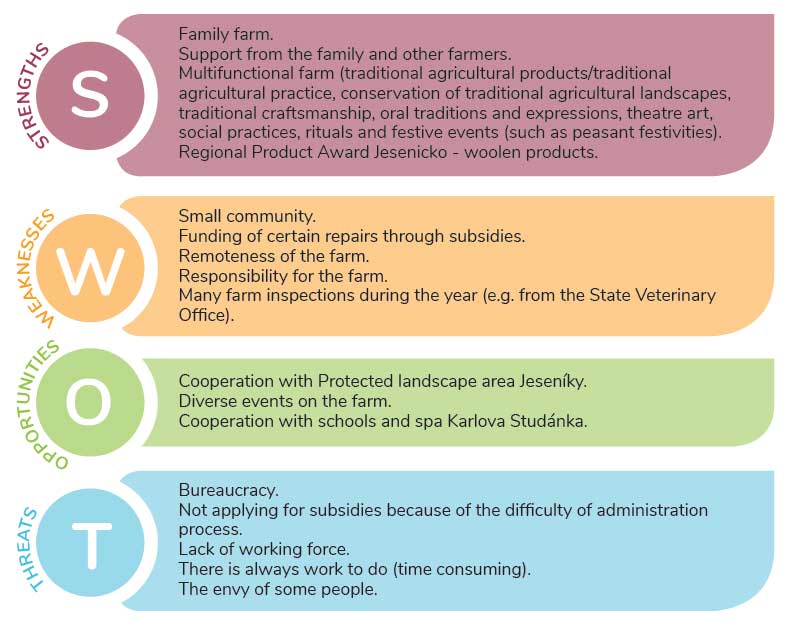
Table 4: SWOT analyses of Mrs. Křenková’s farm
Record keeping for different activities, resources, costs, incomes, special activities, timesheets, the person responsible... is necessary for proper monitoring. Some record-keeping is compulsory which is different from state to state.
For good managing the multifunctional farm Farm Management Software is available. It is used to optimize and manage farm operations and production activities. The software helps in automating farm activities such as record management, data storage, monitoring and analyzing farming activities, as well as streamlining production and work schedules. The software is customized to meet specific farm requirements since each farm has particular activities that are carried out (Ref. 11).
The Farm Accountancy Data Network (FADN) is an instrument for evaluating the income of agricultural holdings and the impacts of the Common Agricultural Policy. The Farm Accountancy Data Network (FADN) is an instrument for evaluating the income of agricultural holdings and the impacts of the Common Agricultural Policy. The concept of the FADN was launched in 1965 when Council Regulation 79/65 established the legal basis for the organization of the network. It consists of an annual survey carried out by the Member States of the European Union. (Ref.12)
Evaluating is assessing the outcomes of the farm business and the impact of decisions. It involves making comparisons of the farm business performance over time and with other farms. The results are used to identify strengths and weaknesses and plan for the future. Successful farmers are careful and objective evaluators.
- Knowledge: Understand the impact of each area of the farm business
on profits - Skills: Identify which actions give which outcomes
- Attitudes: Objective and methodical (Ref. 3)
Evaluating the current profitability of the multifunctional farm is necessary. This involves comparing the amount of money spent on various production activities on the farm (expenses) and the money received from the outputs from the farm (incomes). The difference between the expenses and income will indicate how much money the farm is currently making (profits). The total profit of the farm is determined by summing up all the incomes that are generated from the different on-farm and off-farm activities minus the expenses needed to perform these activities. In this sense, the profit of the farm represents the amount of money that the farmer is left with, from the total amount he/she receives from various sources and what was paid out for all the work, materials and services used on the farm. From this profit, the farmer can pay for household expenses, make investments, and save part of it. (Ref. 7)
While farmers have always faced risk, farming has over the years, as a result of market liberalization and globalization, become increasingly risky. Many of the factors that affect the decisions they make cannot be predicted with complete accuracy; this is a risk.
Farming has become increasingly risky as farmers become more commercial. Good information can help a farmer make rational risk management decisions. The sources of information available include farm records, off-farm statistics, information from input dealers, traders, extension workers, and other farmers, and market price data.
In order to succeed, farmers need to generate more profit and become competitive. They must have a good understanding of the farming environment and be skilled at managing risk. By dealing with risk more effectively, better farming opportunities arise. When the chance or probability of an outcome is known in advance this is called risk. When the chance of an outcome is not known in advance this is called uncertainty. (Ref. 8)
4.4.1. Source of risk
The most common sources of risk in farming can be divided into five areas:
- Production - depend on biological processes that are affected by the weather, by pests and diseases…, equipment may break down, new technology, will it perform as expected…
- Marketing risk exists because of the variability of product prices and the uncertainty of future market prices that the farmer faces when making the decision to produce a commodity.
- Financial risk occurs when money is borrowed to finance the farm business. This risk can be caused by uncertainty about future interest rates, a lender’s willingness and ability to continue to provide funds when needed, and the ability of the farmer to generate the income necessary for loan repayment.
- Institutional risk refers to unpredictable changes in the provision of services from institutions that support farming. Such institutions can be both formal and informal and include banks, cooperatives, marketing organizations, input dealers and government extension services. Part of institutional risk is the uncertainty of government policy affecting farming, such as price support and subsidies.
- Human risk refers to the risks to the farm business caused by illness or death and the personal situation of the farm family. In many countries labor migration away from rural areas is a common occurrence.
- Interrelation of risks - financing of production depends on the ability to borrow capital and the ability of the lender to supply capital in time. The different types of risk often need to be considered together. (Ref. 8)
4.4.2. Avoiding of risk
Risk occurs because of unexpected changes.
If farmers are able to understand and predict the patterns and trends throughout the year, the changes that occur may not be so risky.
Attitudes concerning risk are also associated with the financial ability of the farmer to accept a small gain or loss.
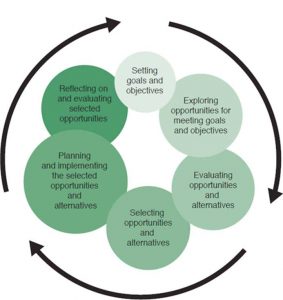
Figure 3: Risk management: The decision making cycle (Ref. 8)
4.4.3. Problem-solving
Problem-solving by different strategies can be used to reduce production risk.
- Risk-reducing inputs are production inputs that improve the chances of better quantity or quality of farm products. Farmers can reduce risk by learning about and applying new technologies and practices designed to address specific risks common to their area of production.
- Selecting low-risk activities. A farmer may forego an enterprise that has a high potential for income but also carries a high risk for loss, and choose instead an enterprise which is less profitable but also less risky.
- System flexibility. A flexible farming system makes it possible for the farmer to make quick or short-term changes in production and sales.
- Production diversification. Diversification spreads risk and is a successful risk management strategy because not all farm enterprises and operations are likely to be affected in the same way by changing situations.
The French case study Marie Sophie Pujol explains: “The search for added value is very important for this woman entrepreneur. She’s following a logic of market differentiation: she does not wish to produce similar products than her farmer neighbors.
- Resources held in reserve are tied up and do not earn a return. This can affect both the net income and cash flow negatively. (Ref. 8)
In Poland case study Educational Farm “Pszczółki” is an ecological farm located in the northern part of the Malopolska Province, in the Miechowska Upland, in a typical agricultural area in Proszowice County, Agnieszka Król, the leader of the farm said:
“You have to believe in yourself - this is the most important thing. In retrospect, I see that a good plan is needed, a set goal. It helps to stay on the right path, not to stray too far.”
The farm leader creates the vision and identifies ways to expend resources to carry out the mission. As a leader the farmer must focus on the long term, through effectively identifying the mission, assessing the needs, and developing a strategic plan for the farm operating. The leader’s task is also to present the farm externally and to be involved in local and regional policy.
The farm manager efficiently allocates scarce resources to capture opportunities and solve problems.
In most farm operations, a single owner or partner must carry out the responsibilities of both leadership and management. (Ref. 13)
- In most of the case studies of REWARD project women responded that managing the multifunctional farm is a very important activity that leads to more or less right decisions.
- Managing is a process of decision-making regarding the use of the resources available.
- To achieve long and short term goals farmer has to go through planning, implementation, and monitoring of available sources and correct activities.
- Cultural heritage in rural areas offers a lot of possibilities for multifunctional farming, and especial women are recognized as good managers of these activities.
- Managing the multifunctional farm with ethics, values and principles give sustainability to the farm business.
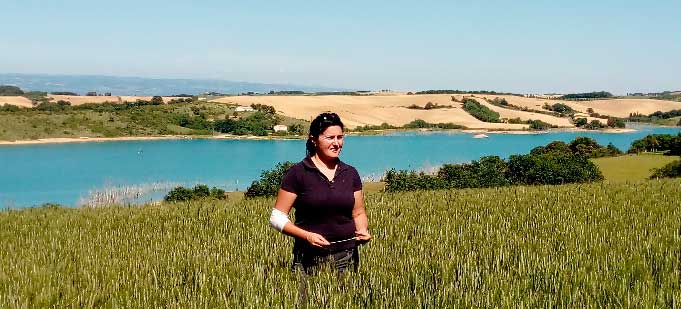
Photos: French case study – Marie Sophie Pujol Fort
- In the module, we mentioned what it takes to be a good manager. What qualities can you find within yourself that make you a good manager? If you are not sure about your qualities, you can ask for advice from some of your family members.
- When starting to develop multifunctional farm activities (MFA), you can start to build up your business based on already existing resources, such as traditional architecture, traditions, countryside, culinary expertise etc. What are pre-existing resources on your farm, within yourself or in your immediate surroundings, that you can build-up to MFA?
- In the managing process long and short-, term goals should be set up, that is why you have to answer some questions. Should I diversify our activities regarding tourism in my old barn or would it be better to have a farm shop on site? How much money do I need? Do I have to take a loan, or could I obtain some EU funds? Will members of our family be enough for the new business or should I employ someone with the right competencies?
Click on the button below to start the Self-assessment.
- Ref. 1: An Importance-Performance Analysis Of the Motivations Behind Agritourism and Other Farm Enterprise Developments in Canada by Carla Barbieri https://journals.brandonu.ca/jrcd/article/view/352/84
- Ref. 2: ECONOMICS for farm management extension by David Kahan, http://www.fao.org/3/a-i3228e.pdf
- Ref.3: ENTERPRENEURSHIP in farming by David Khan, http://www.fao.org/uploads/media/5-EntrepreneurshipInternLores.pdf
- Ref. 4: Ethic in Management, Megha Pareek, MBA IV semester, https://www.slideshare.net/Megha_pareek/ethics-in-management
- Ref. 5: Farm Management; https://www.farmmanagement.pro/the-eleven-qualities-of-a-successful-farm-manager/
- Ref. 6: Framer’s Handbook on Basic Agriculture, https://quotebanq.com/wp-content/uploads/2018/08/Farmer%E2%80%99s-Handbook-on-Basic-Agriculture.pdf
- Ref. 7: FiBL (2011): African Organic Agriculture Training Manual. Version 1.0 June 2011. Edited by Gilles Weidmann and Lukas Kilcher. Research Institute of Organic Agriculture FiBL, Frick, https://www.organic-africa.net/training-manual/english-training-materials/module-6-farm-management.html
- Ref. 8: MANAGING RISK in farming by David Kahan, http://www.fao.org/uploads/media/3-ManagingRiskInternLores.pdf
- Ref. 9: MARKET-ORIENTED FARMING: An overview by, David Kahan, http://www.fao.org/3/a-i3227e.pdf
- Ref. 10: Rozman,Č. and oth., MENEDŽEMENT V KMETIJSTVU, Kmetijska založba, 2009
- Ref. 11: https://www.predictiveanalyticstoday.com/top-farm-management-software/#content-anchor
- Ref. 12: https://ec.europa.eu/agriculture/rica/
- Ref.13: Hanson, J.C., Leadership and Management of Farm Businesses, https://www.arec.umd.edu/sites/arec.umd.edu/files/files/documents/Archive/Leadership%20and%20Management%20of%20Farm%20Businesses_0.pdf










